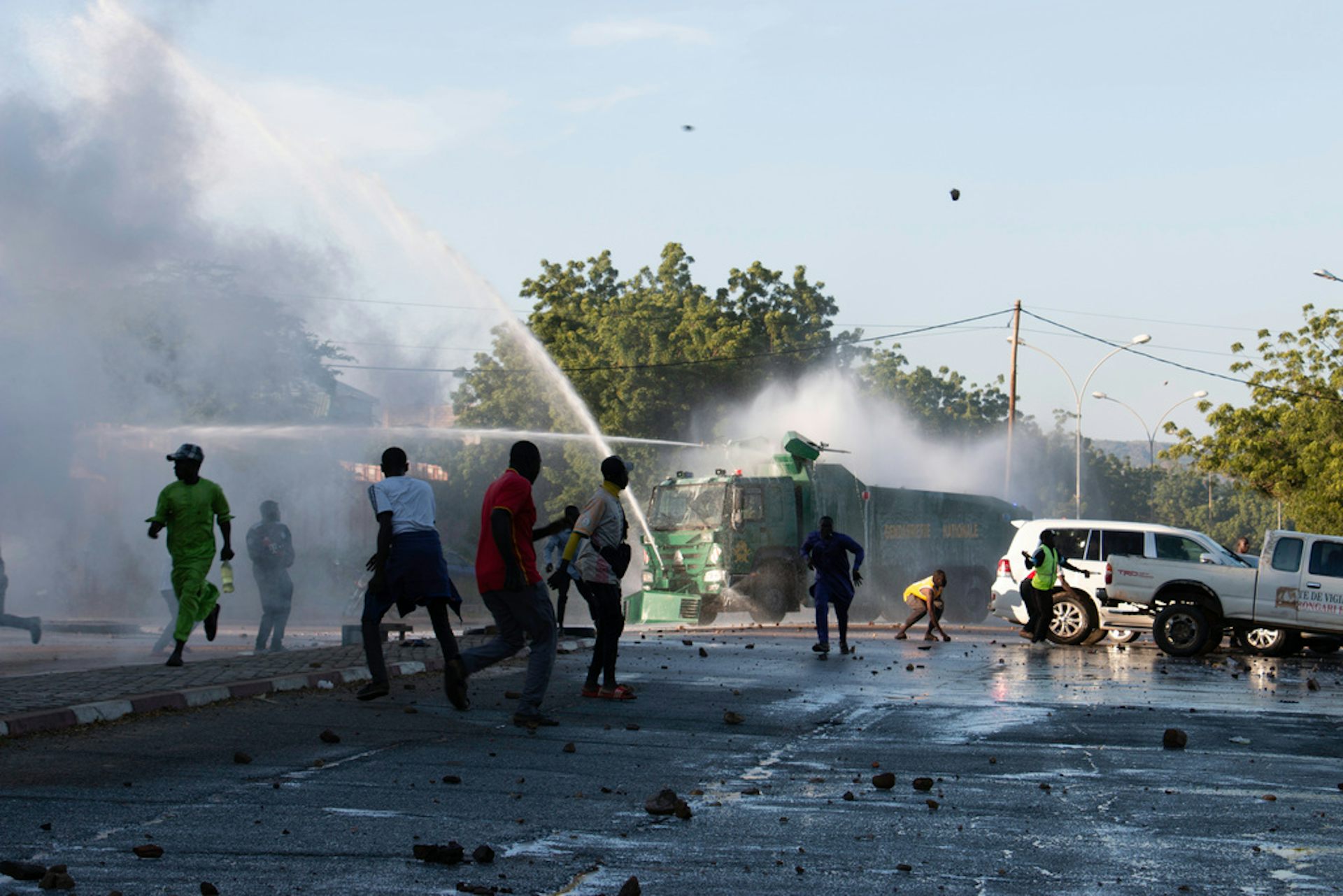Golden Dome: An aerospace engineer explains the proposed nationwide missile defense system
President Trump has set aggressive goals for Golden Dome, but many parts of the system already exist.

President Donald Trump announced a plan to build a missile defense system, called the Golden Dome, on May 20, 2025. The system is intended to protect the United States from ballistic, cruise and hypersonic missiles, and missiles launched from space.
Trump is calling for the current budget to allocate US$25 billion to launch the initiative, which the government projected will cost $175 billion. He said Golden Dome will be fully operational before the end of his term in three years and will provide close to 100% protection.
The Conversation U.S. asked Iain Boyd, an aerospace engineer and director of the Center for National Security Initiatives at the University of Colorado Boulder, about the Golden Dome plan and the feasibility of Trump’s claims. Boyd receives funding for research unrelated to Golden Dome from defense contractor Lockheed Martin.
Why does the United States need a missile shield?
Several countries, including China, Russia, North Korea and Iran, have been developing missiles over the past few years that challenge the United States’ current missile defense systems.
These weapons include updated ballistic missiles and cruise missiles, and new hypersonic missiles. They have been specifically developed to counter America’s highly advanced missile defense systems such as the Patriot and the National Advanced Surface-to-Air Missile System.
For example, the new hypersonic missiles are very high speed, operate in a region of the atmosphere where nothing else flies and are maneuverable. All of these aspects combined create a new challenge that requires a new, updated defensive approach.
Russia has fired hypersonic missiles against Ukraine in the ongoing conflict. China parades its new hypersonic missiles in Tiananmen Square.
So it’s reasonable to think that, to ensure the protection of its homeland and to aid its allies, the U.S. may need a new missile defense capability.
What are the components of a national missile defense system?
Such a defense system requires a global array of geographically distributed sensors that cover all phases of all missile trajectories.
First, it is essential for the system to detect the missile threats as early as possible after launch, so some of the sensors must be located close to regions where adversaries may fire them, such as by China, Russia, North Korea and Iran. Then, it has to track the missiles along their trajectories as they travel hundreds or thousands of miles.
These requirements are met by deploying a variety of sensors on a number of different platforms on the ground, at sea, in the air and in space. Interceptors are placed in locations that protect vital U.S. assets and usually aim to engage threats during the middle portion of the trajectory between launch and the terminal dive.
The U.S. already has a broad array of sensors and interceptors in place around the world and in space primarily to protect the U.S. and its allies from ballistic missiles. The sensors would need to be expanded, including with more space-based sensors, to detect new missiles such as hypersonic missiles. The interceptors would need to be enhanced to enable them to address hypersonic weapons and other missiles and warheads that can maneuver.
Does this technology exist?
Intercepting hypersonic missiles specifically involves several steps.
First, as explained above, a hostile missile must be detected and identified as a threat. Second, the threat must be tracked along all of its trajectory due to the ability of hypersonic missiles to maneuver. Third, an interceptor missile must be able to follow the threat and get close enough to it to disable or destroy it.
The main new challenge here is the ability to track the hypersonic missile continuously. This requires new types of sensors to detect hypersonic vehicles and new sensor platforms that are able to provide a complete picture of the hypersonic trajectory. As described, Golden Dome would use the sensors in a layered approach in which they are installed on a variety of platforms in multiple domains, including ground, sea, air and space.
These various platforms would need to have different types of sensors that are specifically designed to track hypersonic threats in different phases of their flight paths. These defensive systems will also be designed to address weapons fired from space. Much of the infrastructure will be multipurpose and able to defend against a variety of missile types.
In terms of time frame for deployment, it is important to note that Golden Dome will build from the long legacy of existing U.S. missile defense systems. Another important aspect of Golden Dome is that some of the new capabilities have been under active development for years. In some ways, Golden Dome represents the commitment to actually deploy systems for which considerable progress has already been made.
Is near 100% protection a realistic claim?
Israel’s Iron Dome air defense system has been described as the most effective system of its kind anywhere in the world.
But even Iron Dome is not 100% effective, and it has also been overwhelmed on occasion by Hamas and others who fire very large numbers of inexpensive missiles and rockets at it. So it is unlikely that any missile defense system will ever provide 100% protection.
The more important goal here is to achieve deterrence, similar to the stalemate in the Cold War with the Soviet Union that was based on nuclear weapons. All of the new weapons that Golden Dome will defend against are very expensive. The U.S. is trying to change the calculus in an opponent’s thinking to the point where they will consider it not worth shooting their precious high-value missiles at the U.S. when they know there is a high probability of them not reaching their targets.
Is three years a feasible time frame?
That seems to me like a very aggressive timeline, but with multiple countries now operating hypersonic missiles, there is a real sense of urgency.
Existing missile defense systems on the ground, at sea and in the air can be expanded to include new, more capable sensors. Satellite systems are beginning to be put in place for the space layer. Sensors have been developed to track the new missile threats.
Putting all of this highly complex system together, however, is likely to take more than three years. At the same time, if the U.S. fully commits to Golden Dome, a significant amount of progress can be made in this time.
What does the president’s funding request tell you?
President Trump is requesting a total budget for all defense spending of about $1 trillion in 2026. So, $25 billion to launch Golden Dome would represent only 2.5% of the total requested defense budget.
Of course, that is still a lot of money, and a lot of other programs will need to be terminated to make it possible. But it is certainly financially achievable.
How will Golden Dome differ from Iron Dome?
Similar to Iron Dome, Golden Dome will consist of sensors and interceptor missiles but will be deployed over a much wider geographical region and for defense against a broader variety of threats in comparison with Iron Dome.
A second-generation Golden Dome system in the future would likely use directed energy weapons such as high-energy lasers and high-power microwaves to destroy missiles. This approach would significantly increase the number of shots that defenders can take against ballistic, cruise and hypersonic missiles.
Iain Boyd receives funding from the U.S. Department of Defense and Lockheed-Martin Corporation, a defense contractor that sells missile defense systems and could potentially benefit from the implementation of Golden Dome.
Read These Next
How the ‘slayer rule’ might play a role in determining who will inherit wealth from Rob Reiner and h
These rules have a long history in the United States. They played a role in the notorious murders by…
People are getting their news from AI – and it’s altering their views
Even when information is factually accurate, how it’s presented can introduce subtle biases. As large…
Medieval peasants probably enjoyed their holiday festivities more than you do
The Middle Ages weren’t as dreary and desperate as you’d think, and peasants often had weeks of…





